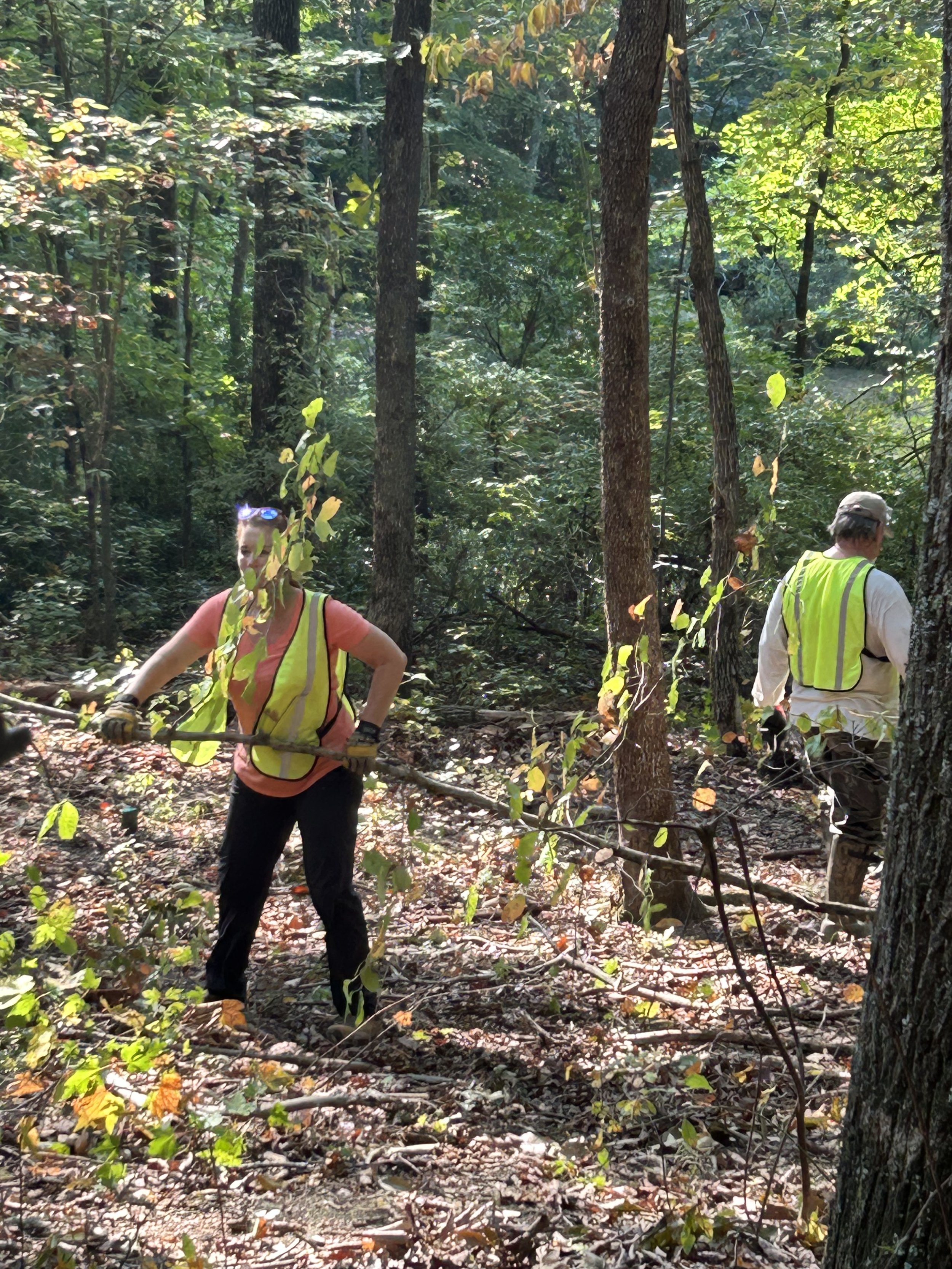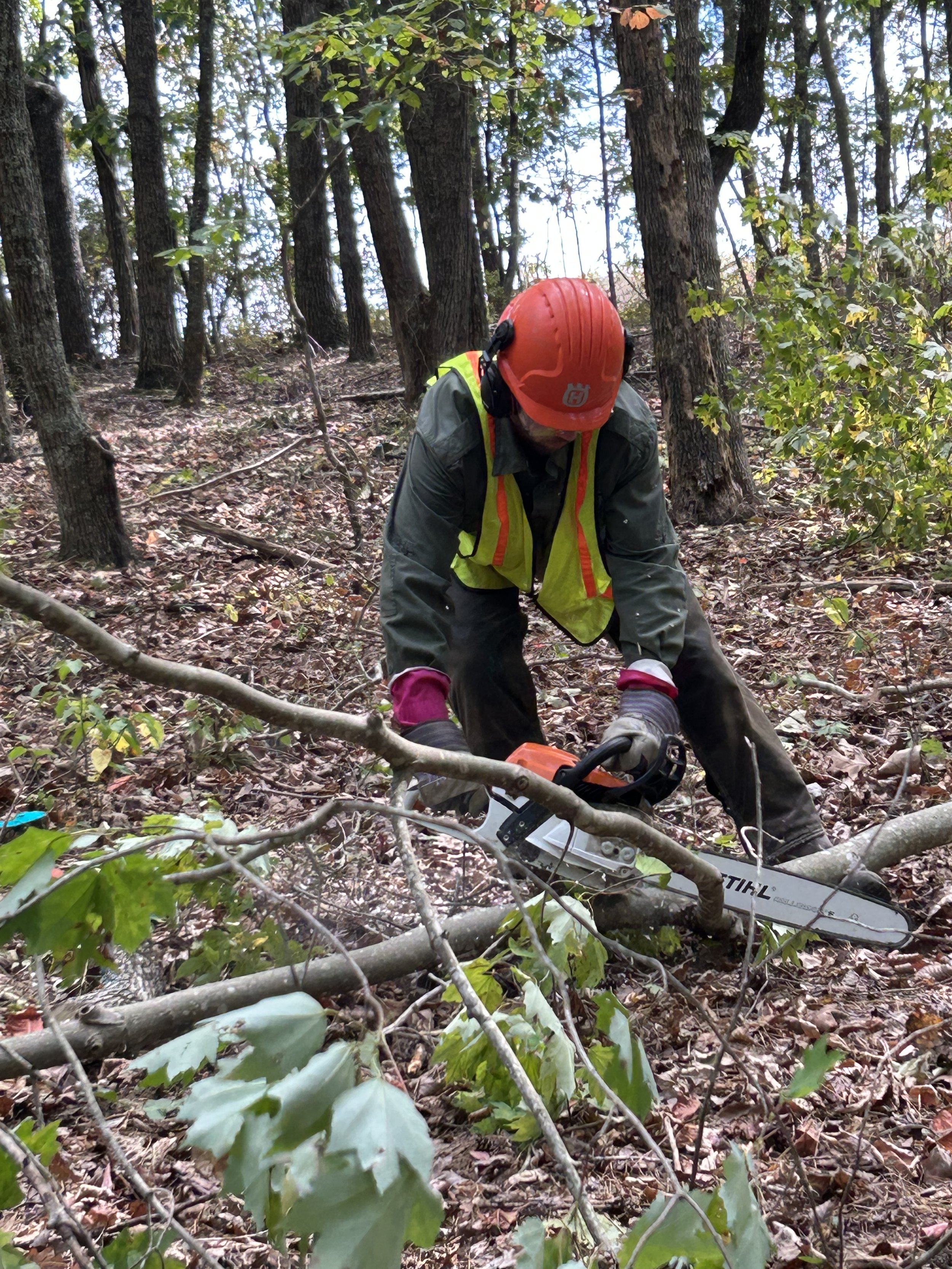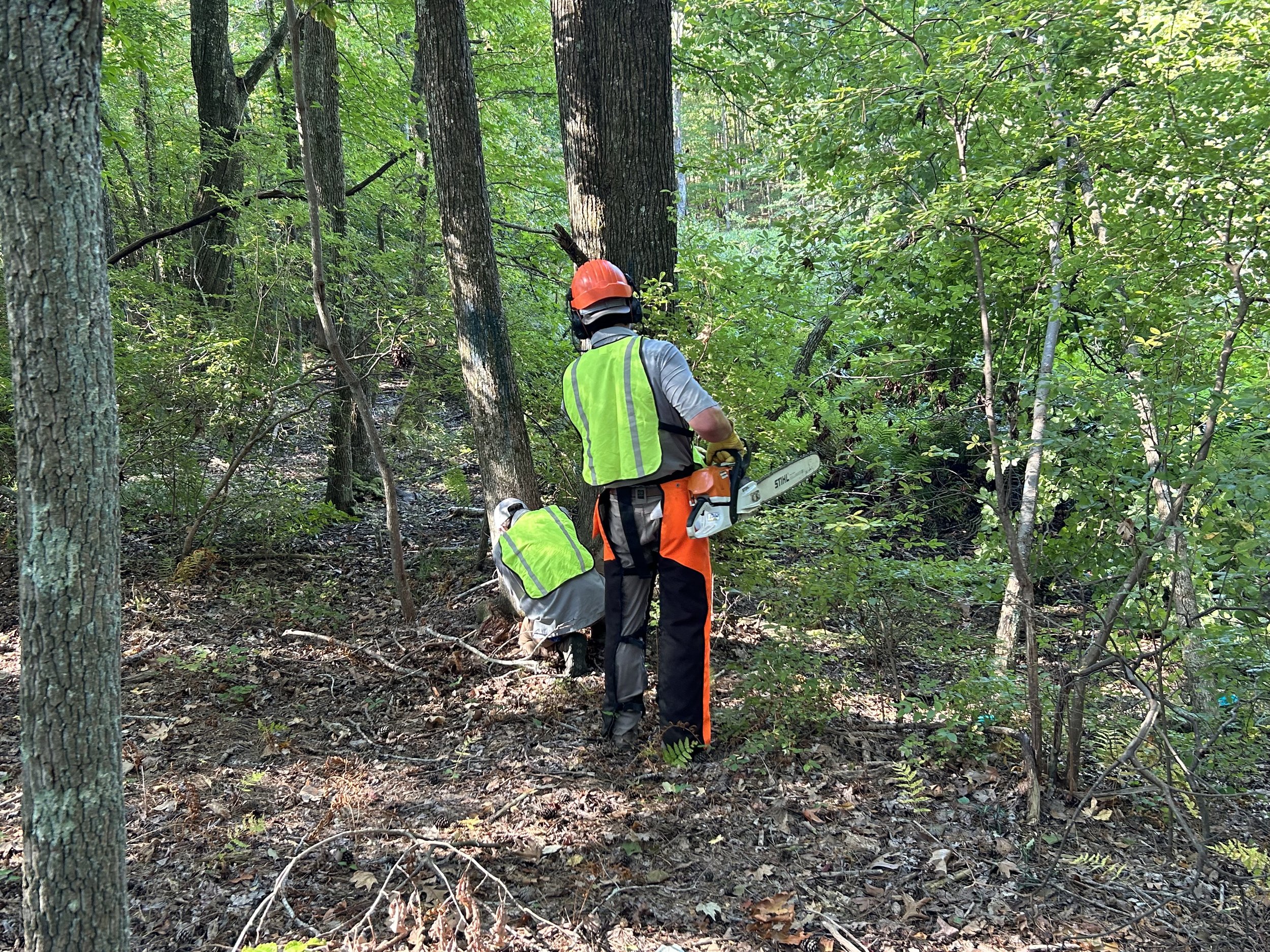Conservation in Action: Restoring an Imperiled Ecological Community of the Tennessee River Gorge
By Austin Young
September 23, 2024 officially marked a new era of TRGT conservation efforts of the Tennessee River Gorge, hereafter Gorge. Since 1981, TRGT and its partners have accomplished a great deal. We have acquired conservation land, provided quality public access opportunities, spearheaded rigorous bird research combined public education and outreach opportunities, and brought together a diverse group of partners. As a result, TRGT’s resources and capabilities have grown substantially! Over the past years, we have arrived at an excellent position to begin undertaking active land management activities. These activities include habitat restoration, forest management, and more. So what? Why does this matter? Active land management is very important to our mission because we value conserving a healthy Gorge for the community and the generations that follow us.
Yes, it is vitally important to acquire and preserve land in the Gorge to retain culturally and ecologically important wilderness areas and provide public access to that land. BUT we are not stopping there. We strive to take it another big step and actively manage the protected land and habitats in Gorge in order to conserve rare ecological communities, provide high quality wildlife habitat, and ensure the Gorge is healthy and flourishing.
The Tennessee River Gorge Hosts Rare and Imperiled Habitat Types that Need Management to Persist!
One of the Aetna Mountain Bogs pictured with TRGT staff and others for scale. These bogs are each ~1 acre in size and create a very unique habitat type in a homogeneous landscape of eastern woodlands. It's no surprise that these woodland bogs provide habitat for rare plants, amphibians, and other wildlife that need standing water to survive.
The Gorge has several clearly imperiled and rare habitat types that for years have been at the forefront of TRGT’s mind to actively restore and manage. For example, TRGT acquired a property on Aetna Mountain in 2021 that reportedly had two wetland habitats. The following year, TRGT staff visited these sites with biologists from the Tennessee Department of Environmental Conservation, the Southeastern Grasslands Institute, and the US Fish and Wildlife Service in order to obtain a comprehensive understanding of what exactly these wetlands in the woods were all about. To the surprise of TRGT, the “wetlands” were, in fact, a rare ecological woodland bog community! Rare plant and wildlife species of conservation concern were flourishing in these environments, including Virginia chain fern (Woodwardia virginica), sharp-scaled manna grass (Glyceria acutiflora), barking tree frog (Dryophytes gratiosus), and others. Furthermore, it’s clear that these bogs play an essential role in the local hydrology by absorbing large amounts of precipitation. These bogs are also important because they provide surface water to vegetation and wildlife in an otherwise water-limited environment. In other words, there are very few other water sources available in the area outside of the bogs.
A Few Plants and Wildlife That Utilize the Woodland Bog Habitat!
Barking Tree Frog (Photo Credit: Eliot Berz)
Common Snapping Turtle (Photo Credit: Eliot Berz)
Spotted Salamander eggs (Photo Credit: Austin Young)
Virginia Chain Fern (Photo Credit: Thismia.com)
However, not all is good in the Aetna Mountain Bogs…
Unfortunately, the same biologists who documented the spectacular wildlife and plants back in 2021 also had a somber undertone intermixed with their joy. As the scientists surveyed the plant species, they discovered a great abundance of invasive species that were effectively “choking out” or overwhelming the native woodland bog ecological community. These invasive woody plants included red maples (Acer rubrum), sweet gum (Liquidambar styraciflua), and black gum (Nyssa sylvatica). In fact, the invasive plants were so dense that it appears to have changed the woodland in recent decades to become a “closed-canopy forest,” in which the forest canopy becomes dense enough to prevent necessary amounts of sunlight to reach the forest floor.
It’s important to recognize this phenomenon is occurring in many bogs all over the southeastern U.S., according to Zach Irick of the Southeastern Grasslands Institute. And the reason is fairly simple. In recent history, human society in the southeastern U.S. has chosen to avoid and suppress wildland fire, which paves the way for plant and wildlife species that are not tolerant of fire to reproduce and survive in abundances that were not possible before. At the same time people have also brought non-native, exotic plant species into the region that have proliferated in their novel environments as well. Lastly, unsustainable logging practices over the past centuries have exacerbated the issue. Fast-forward only a matter of decades and the habitats that were historically woodland bogs are now drastically different in many cases because the invasive, shade-loving, fire-intolerant species have become increasingly common.
So what now? Is that it? Are we stuck with these conditions? Are the bogs going to disappear? Can we restore these imperiled habitat types that have changed so much in recent decades? Thankfully there are very effective habitat restoration methods in the conservationist’s tool belt that we can use restore these habitats. And we must!
“It would be a serious failure if these rare habitat types, such as the Aetna Mountain Bogs, were to disappear under our watch.”
- Eliot Berz, TRGT Executive Director
Restore the Bogs!
In the years since we acquired the Aetna Mountain Bogs tract in 2021, we have been preparing to restore the native ecological communities that exists within the bogs. That goal came to fruition this autumn. Beginning on September 23, 2024, TRGT staff with a team of volunteers took on the “all hands on deck” approach to remove as many individual invasive plants as possible that are growing into and around the woodland bogs in high densities. Through ol’ fashioned elbow grease and hard work, we were able to clear invasive plants from approximately half of the bog in only two days! We employed well-established forestry methods to remove or kill invading plants and we drug the cut trees out of the restoration zone.
It’s important to think long-term for what we can do to stabilize the Aetna Mountain Bog plant community and its ecological function. It’s not really sustainable to cut and drag trees every year. So to keep the invasive species at bay and provide optimal conditions for native plants to thrive, we are following up on the tree removal effort with a prescribed fire under the supervision of certified burn bosses at the Southeastern Grasslands Institute. The use of fire in habitat management is very common in the region and is likely necessary to stabilize the ecological community at the Aetna Mountain Bogs.






































